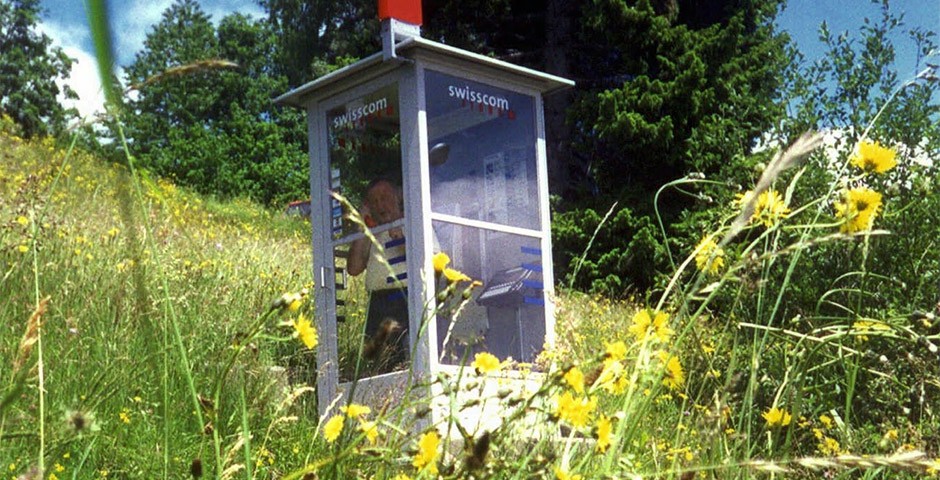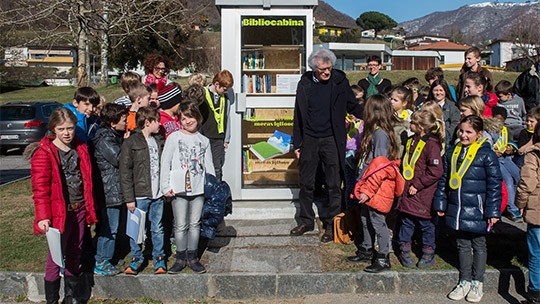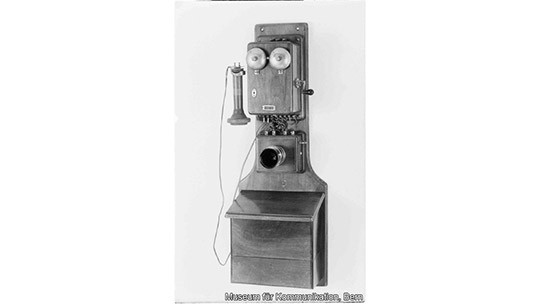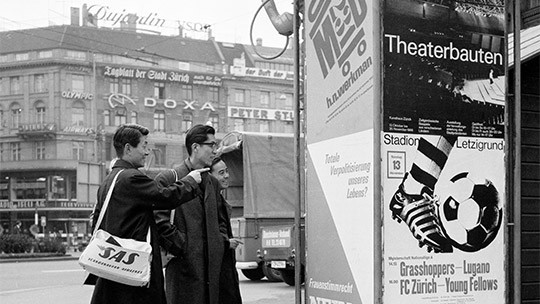
In decline for the past 20 years
Publifon: a nostalgic farewell
Publifon use has declined dramatically since the mobile phone made its triumphal entry in the 1990s and many payphones were removed consequently. Publifon is now a relic of a bygone age – and a platform for projecting our yearning for the good old days. The curtain is about to fall for Publifon.
Michael Lieberherr, 26 September 2017
At its peak in 1995, there were more than 58,000 private and public Publifon payphones across the country, the equivalent of more than one phone per square kilometre on average. It was a phone for on the move, long before we could take them with us. And then mobile phones came along. Consumers were now connected on the move and could send short messages.

But it has prospects: as a library, for instance. There are already several of these “bibliocabinas” in Ticino. Picture: Keystone
The mobile phone with its many new communication options like chat, voice and video telephony upstaged the public payphone completely. For years now the mobile network has covered 99 per cent of populated areas. Today there are around 130 mobiles per 100 inhabitants, but only 0.075 Publifon payphones.
And when did you last use a Publifon payphone?
The number of calls dropped by 95% from 2004 to 2016. In terms of Publifon basic service provision, the number of calls declined by a third in 2016. More than 1000 phone boxes are unused for days on end.
Across the globe public phones are being pushed out by mobile phone and not developed any further. Spare parts are thus becoming rare and maintenance expensive – for a service hardly anyone wants. Although Swisscom has already greatly reduced the number of Publifon payphones, the large majority remaining run at a loss.

Hasler wall phone around 1885: what telephones looked like in the first phone boxes. Picture: Museum of Communication
The government has taken these developments into account: the Federal Council has decreed that Publifon will no longer be part of the basic service provision with effect from 2018. Swisscom is investing in modern new technologies rather than Publifon and will continue to reduce the number of remaining public phones.
A museum piece
Publifon will share the fate of objects like the Discman, compact camera and railway timetable: it will become obsolete through lack of use, only serving as a platform for projecting our yearning for the good old days.
Some boxes are being repurposed, as book exchange marts, defibrillator posts or storytelling venues, for instance. After all, Publifon payphones were always in the best sites. Swisscom is letting town councils repurpose boxes if they wish.

Zurich, 1966: Japanese tourists having fun in front of a phone box. Image: Keystone
In Switzerland the Publifon payphones leaves us with many happy memories and touching moments: joke calls, pages ripped out of telephone directories, the yearned-for call from a lover away on military service, people who blocked it for hours, a cosy place to wait and more besides.
There were 58,000 phone boxes at their height but only 5,900 remain in operation. The remaining Publifon payphones will go into well-earned retirement over the coming years. Communities will be advised in advance. In the medium term the curtain will fall for the Publifon.
Swisscom will provide a special sector solution to ensure communication in closed institutions where people cannot make calls via a mobile phone.

Pierre-Antoine Favez, Head of Publifon
“The end is in sight.”
Monsieur Favez, Publifon payphones have been in decline for years. Wouldn’t it be better to build up something new?
We used to install Publifon payphones for customers like hotels, but now they use public WLAN hotspots. We’re constantly extending service in this area. Though products change, the goal of providing a good service stays the same. That’s an incentive for me.
When did you last use a Publifon payphone yourself?
Privately, you mean? Some years ago.
Why are we not continuing to develop Publifon payphones?
Use is declining dramatically every year – by 95% overall between 2004 and 2016. Mobile phones have ousted the public payphone, and not only in Switzerland. Development is not being pursued anywhere in the world. Only one single company in the world, in Libya, can produce our Taxcard. We were able to source the chip from a supplier in France. At times, we didn’t have any suppliers at all.
How many Publifon payphones still exist today?
There are still 5’900 public and private Publifon payphones currently. Figures have been declining for more than 20 years. In the private sector, business customers have cancelled 40,000 lines over the years.
When will the last Publifon payphone go in Switzerland and where will it be?
I don’t know that yet. It depends on several factors, like usage and developments in the network. We are not modernising Publifon payphones any more. Vandalism also plays a role. The last Publifon is likely to be in a major railway station or an airport.
